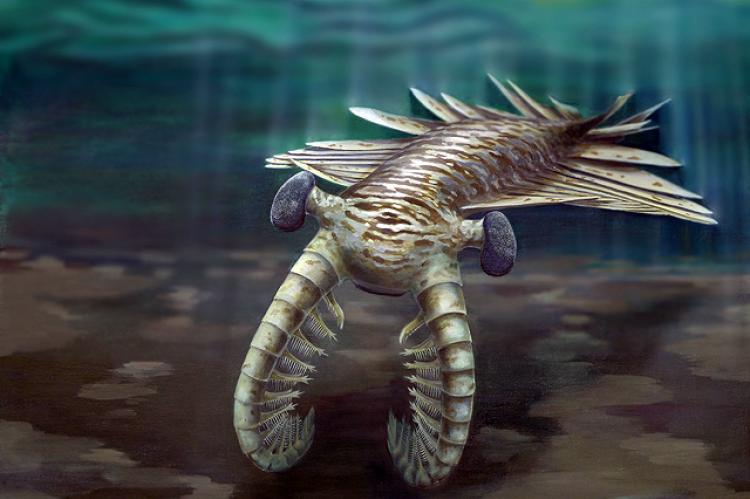World's first super predator had remarkable vision
500 million years ago, the world's first apex predator had highly acute vision, rivalling or exceeding that of most living insects and crustaceans. South Australian Museum and University of Adelaide scientists working on fossils from Kangaroo Island have found eyes belonging to a giant 500 million-year-old marine predator that sat at the top of the earth's first food chain.
Palaeontologists have discovered exceptionally preserved fossil eyes of the top predator in the Cambrian ocean from the fearsome metre-long Anomalocaris that lived 500 million years ago
The World's Oldest Apex Predator
Anomalocaris is the stuff of nightmares and sci-fi movies. It is considered to be at the top of the earliest food chains because of its large body size, formidable grasping claws at the front of its head and a circular mouth with razor-sharp serrations.
Supporting evidence of this predator's dominance includes damage to contemporaneous trilobites, and even its fossilised poo (or coprolites) containing the remains of its prey.
The discovery of its stalked eyes—showing astonishing details of its optical design—from a 515 million-year-old deposit on Kangaroo Island in South Australia now confirms it had superb vision to support its predatory lifestyle.
Compound eyes
The fossils represent compound eyes - the multi-faceted variety seen in arthropods such as flies, crabs and kin—and are amongst the largest to have ever existed, with each eye up to 3 cm in length and containing over 16,000 lenses.
The number of lenses and other aspects of their optical design suggest that Anomalocaris would have seen its world with exceptional clarity whilst hunting in well-lit waters. Only a few arthropods, such as modern predatory dragonflies, have similar resolution.


